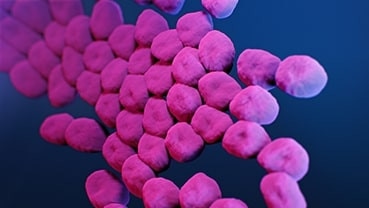Scientists using artificial intelligence find antibiotic to take on superbug Acinetobacter baumannii
Scientists have used artificial intelligence to discover a powerful new antibiotic that can kill one of the world’s deadliest superbugs.

Scientists have used artificial intelligence to discover a powerful new antibiotic that can kill one of the world’s deadliest superbugs.
An AI system analysed 6680 different chemical compounds to identify which could be used to target and kill Acinetobacter baumannii, one of three superbugs deemed a “critical” threat by the World Health Organisation.
Scientists have hailed the potential for AI to greatly speed up the discovery of drugs to tackle antibiotic-resistant strains of bacteria.
Researchers in Canada and the US fed data on thousands of drugs into an AI system along with information on how effective they were in killing or slowing the spread of the bacteria strain known as A. baumannii, which can cause infection in wounds and lead to pneumonia.
This allowed the AI system to learn the chemical structure of the compounds that were most effective in tackling the superbug.
It took the AI system just 90 minutes to whittle the 6680 compounds down to a much shorter list. The researchers tested 240 of these in the laboratory, discovering nine potential antibiotics.
One of these, dubbed abaucin, was found to be extremely potent. Laboratory tests showed that it was able to kill A. baumannii in mouse wounds and also kill the superbug in samples taken from human patients.
The drug appeared to be highly specific, with no effect on other strains of bacteria. This could make it more effective because some forms of antibiotics can lead to side-effects by indiscriminately killing beneficial bacteria in the body.
The drug will have to be refined in the laboratory and undergo clinical trials before it can be used in humans. This may take until the end of the decade.
“AI enhances the rate, and in a perfect world decreases the cost, with which we can discover these new classes of antibiotic that we desperately need,” Dr Jonathan Stokes, from McMaster University in Ontario, told the BBC.
The study, published in the journal Nature Chemical Biology, noted: “Fortunately, machine-learning methods allow for the rapid exploration of chemical space, increasing the probability of discovering new antibacterial molecules.”
The Times





To join the conversation, please log in. Don't have an account? Register
Join the conversation, you are commenting as Logout